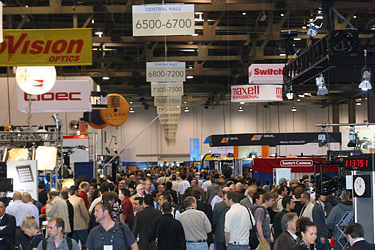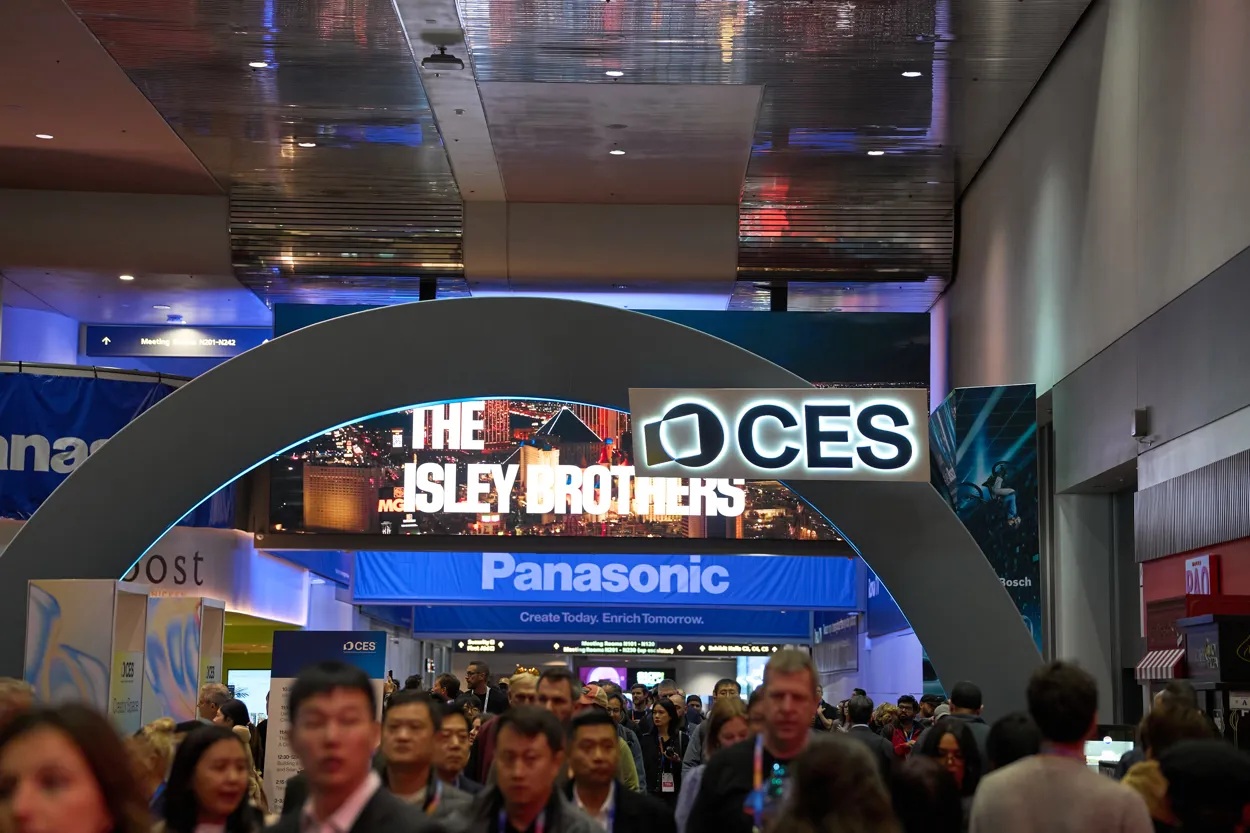NAB Show Sees Improving Media Landscape
LAS VEGAS
Years from now, it’s likely that veteran NAB attendees will remember the 2010 edition as “the one about 3D.” And it’s true, you couldn’t turn much in any direction without seeing a sign bearing the two-character alphanumeric “3D.” But the most recent NAB exhibition provided a lot more than just 3D.
First and foremost, the show offered some real signs of health for the broadcast and production industry. In a “How’s the show been for you?” survey conducted during over 100 booth visits, the resounding answer, from the football field-sized mega-booths to the vendors sharing a 10x10-square foot stand was: “Better than last year.”
Traffic in the halls was brisk Monday and Tuesday, moderating a bit on Wednesday, and down like it always is on Thursday.

The 2010 NAB Show attracted more than 88,000 attendees, 23,900 of which were international. Approximately 1,485 exhibitors occupied 760,000 square feet in the Las Vegas Convention Center.UPTICK IN SPENDING
Mark Warner, vice president/sales for Seattle-based system integrator Advanced Broadcast Solutions made an observation more critical to industry health: “People are starting to spend money again. I think last year they were waiting to see if the television business was going to continue to drop.”
To put a number to the turnaround, after the show, industry analysts BIA/Kelsey in their “April Investing in Television Market Report” predicted “this year will see a 7.5 percent increase as combined over-the-air station income will hit $17 billion, compared with last year’s $15.8 billion.” The report notes the election year as one of the revenue drivers, (see “BIA/Kelsey: 2010 Broadcast Income to Reach $17 Billion,” p. 40).
Besides the brighter financial future, Warner also pointed to more affordable equipment. “I can put together a fully high-definition infrastructure for a station today for around $200,000, a third of what it would have cost a couple of years ago,” he said.
Tom Edwards, a director with Mountainwest Sports Network in Littleton, Colo. agrees. “I think that there are production tools that are much less expensive than what we had become used to, that are out of the $250,000 per piece range that are going to work just fine for us, things like graphics and so forth.”
Gregg Echols, director of marketing and business development for systems integrator Communications Engineering, Inc. in Newington, Va., observed that television stations and other video-equipped venues may be putting off completing their HD infrastructure at their own peril. “I’d say at this stage, it’s almost like most people just take for granted that what they’re doing is going to be HD, unless you’re a real small time operator,” he said. “It’s definitely become more reasonable, and I guess there’s an expectation that when you turn on something on TV, if it’s not HD you go: “What’s the problem with these people?”
SAY BYE TO ‘GOOD ENOUGH’
This increasing affordability of HD, full-HD, was certainly seen in camcorders at this NAB. Several years ago the movement toward affordable HD saw a proliferation of HDV camcorders, sporting less than full 1920x1080 resolution 1/3-inch imagers, which were touted as “good-enough” for HD. Judging by the number of affordable full-high resolution 1/3-inch imager cameras introduced at this years show, the days of just good-enough are passing by.
Two additional observations about those 1/3-inch camcorders: They’re not recording to tape anymore, but to solid state media; and the fact that the lensmakers have stepped forward with impressive ranges of zoom lenses for the 1/3-inch format.
Notably absent from this NAB was competition from the microwave equipment makers for 2-gigahertz customers filling out their wish lists as part of the BAS (broadcast auxiliary service) relocation. In its place for the broadcast news customers to mull over were IP and 3G video transmission solutions, including some designed to allow neighborhood journalists to contribute news stories for stations’ microsites.
CEI’s Echols noted that stations aren’t the only customers he’s seen shopping for 3G video transmission gear. “We’re starting to see a lot of demand not only from TV stations but also from universities and other teaching institutions,” he said. “It’s become obvious to them that for a lot of TV stations in the future, when it comes to reporting from the field, the reporter is going to have to do the whole job alone.” In other words, they want to give their students a leg up in tomorrow’s job market by familiarizing them with the news tools of tomorrow.
Virtual reality demonstrations were another technology for broadcast news operators that were well represented on the exhibition floor. VR is another case where the equipment has not only gotten better in terms of rendering speed and positional precision of the cameras capturing the live elements, but also the price of many pieces of equipment needed has dropped as the number of vendors has multiplied.
At the main entrance to the Las Vegas Convention Center was an anxiously awaited exhibit of Mobile DTV receiving devices, which spanned the gamut from Mobile DTV-enabled cell phones and DVD players to notebook computers and tablets that receive and display Mobile DTV. The signals viewed in the exhibit came from local Las Vegas stations’ own transmitters, providing proof that Mobile DTV signals could penetrate the steel and concrete structure of the LVCC facility.
THE STAR OF THE SHOW
And 3D—yes there was lots of 3D.
An engineering educational track all day Saturday played to a standing room only crowd, and there were additional well-attended sessions on the challenges and opportunities of the 3D presentation of sporting events.
On the show floor there were stereoscopic rigs, designed to position and control the left-eye and right-eye cameras necessary for 3D imaging; lenses designed to deliver identical performance when zoomed in unison; cameras designed specifically for use in 3D; and camera support equipment demonstrating the ability to handle the double-plus camera payload most 3D imaging packages entail. Add to that a 3D remote truck, 3D editing solutions, 3D monitors and conversion equipment designed to render 2D video in 3D.
Supervising stereographer Paul Taylor observed “One of the most exciting things is 3D-specific software, for both on-set and post production use. The trend is toward more automation with the rigs, which will certainly become more necessary.” He also noted the coming of smaller rigs for smaller cameras, which he said will also be necessary.
Taylor’s take on the dozen or so single-body 3D camcorders on display at NAB was that there was nothing ready yet for “serious” 3D production. “I would say that a single body 3D camera is still a work in progress,” he said. “It’s hard to make a single body camera that fits everyone’s needs. So far, it had to be limited in what it can do. And unfortunately, 3D doesn’t work very well when you limit what the 3D rig can do.” But he said a viable single body 3D camera is necessary for the some segments of the industry.
There may be no real business model for 3D yet, and some question about whether more than a small fraction of the viewing audience is ready to chuck their new HD sets for 3D flat screens. But on the chance that 3D does make a go of it, no vendor wants to be left behind either.
All the 3D at NAB reminded this reporter of what he remembers as “the one about HD” back in the 1980s, when he had his first opportunity to operate a 16:9 framed HD camera. That didn’t exactly signal that HD was right around the corner, but it pointed to a lot of future possibilities.
The professional video industry's #1 source for news, trends and product and tech information. Sign up below.
